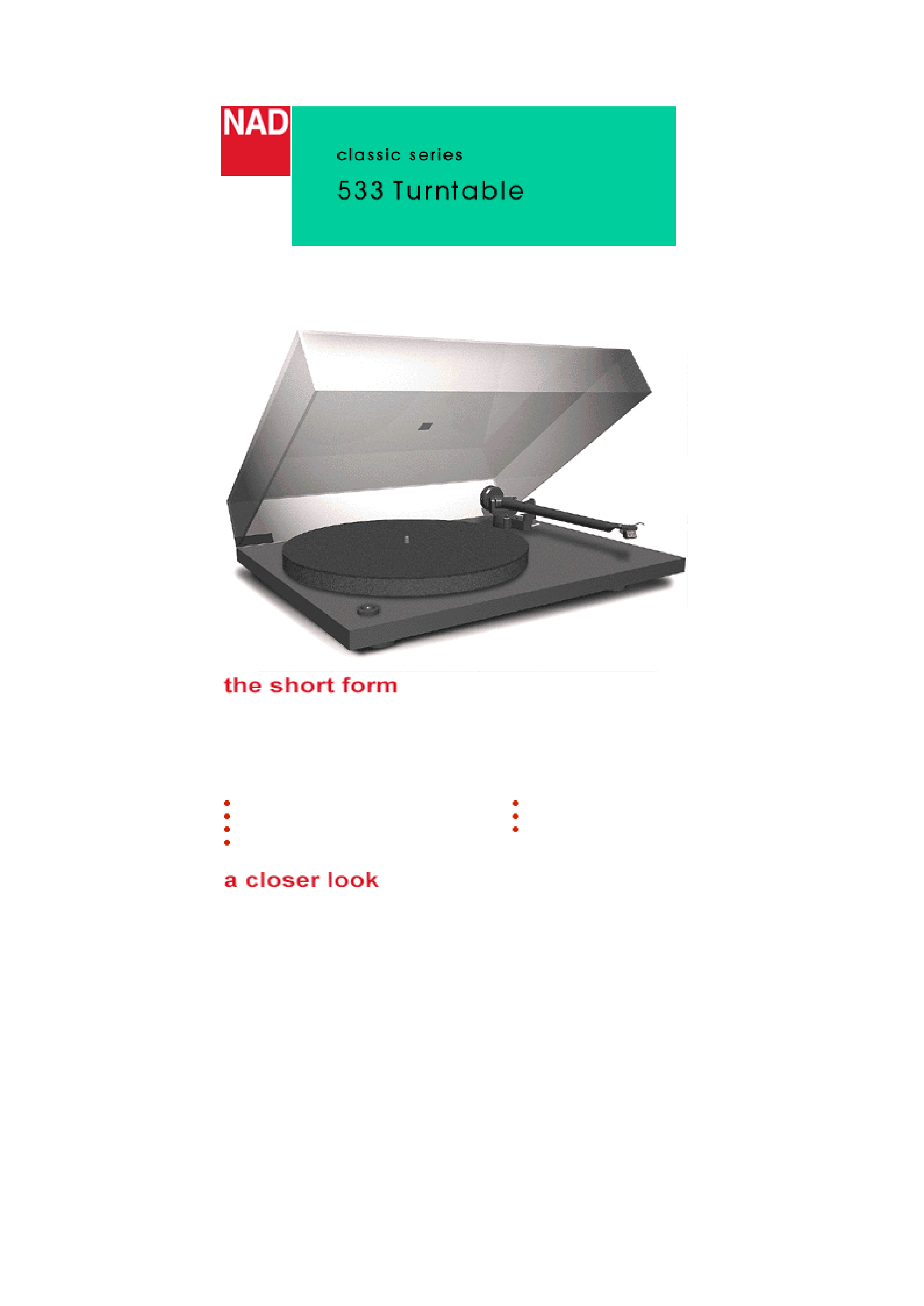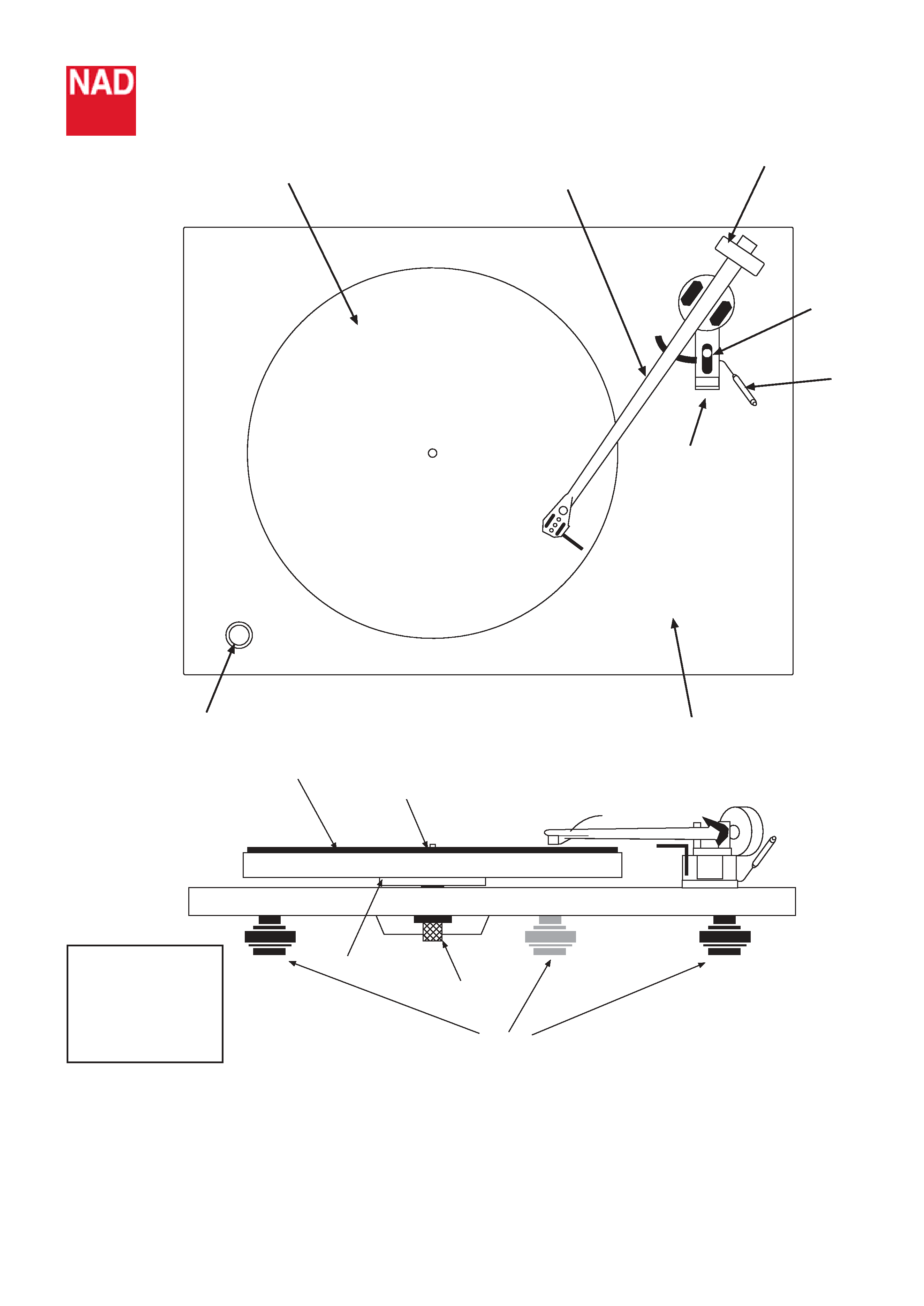
533
Instructions for Use
This turntable has been engineered to give extremely good musical reproduction. Inherent in the design are
several features that improve sound quality and focus the manufacturing costs where they are most needed.
Example: Speed control is achieved by manually moving the drive belt from one pulley to another as shown below.
33rpm
45rpm
The cost saving from the use of manual speed change allows a very expensive low vibration motor with an
accuracy exceeding that of conventional designs to be employed.
Tips and Suggestions
1
Try to mount the turntable on a rigid, level surface. A light shelf screwed to the wall or in an alcove
would be ideal. Avoid mounting on hollow or heavy cabinets, or anything mounted on a wooden floor.
2
Try to keep the lid closed whilst playing records. This will prevent dust falling onto the records and make
cleaning unnecessary. There may also be a sound improvement.
3
Don't use a record cleaner that works as the record plays, or any cleaners that use water or fluids. Don't
touch the playing surface of records. Visible dust on the record surface is simply brushed aside by the
stylus, and any that collects there can easily be blown away.
4
Try to leave the turntable running during a record playing session. Switch on before the start, and only
switch off after the last record has finished. Changing records whilst the platter revolves is easier than it
sounds!
5
DO NOT lift the centre hub from its bearing. The bearing is factory assembled with a film of thick
lubricant. Disturbance of this can cause serious problems with speed variation and wear.
6
When switching on the turntable, especially at 45rpm, it is recommended to give the platter a quick spin
clockwise as the `ON' switch is pressed. This relieves strain on the motor and belt.
7
No maintenance should be necessary. If the turntable is working well, leave it alone. Some settling of the
anti-vibration feet may cause the turntable to lean backwards slightly after a few months, but this is
nothing to worry about.
8
Don't use any polishes on the turntable or lid. To clean or dust, wipe gently with a soft cotton duster
(slightly damp, only if necessary).
9
The tonearm is automatically earthed (or ground) through the arm cable screening. No other earthing
should be necessary.
10 Save the packing, in case the turntable has to be transported in the future.
11 When the record reaches the end of one side, remember to lift the stylus off the surface of the record
using the lift/lower mechanism.
Enjoy the music!
Goldring Elektra Technical Specifications
Transducer Characteristics
Frequency response
20Hz - 20kHz ±3db
Channel balance
2dB at 1kHz
Channel separation
20dB at 1kHz
Sensitivity
5mV ±2dB
1kHz at 5cm/second
Static compliance
16mm/N
Equivalent tip mass
0.7mg
Vertical tracking angle
26°
Stylus radius
Elliptical 0.0007" x 0.0003" (18µ x 7µ)
Stylus type
Replaceable
Electrical Characteristics
Load resistance
47k
Load capacitance
150-400 pF
Internal inductance
560 mH
internal resistance
700
Mechanical characteristics
Cartridge weight
4.2g
Fixing centres
0.5" (12.7mm)
Tracking weight
1.5-2.0g (1.7g nominal)
Goldring Elektra cartridge
Your NAD 533 turntable comes with a factory fitted Goldring Elektra moving magnet cartridge.
When following the setting-up instructions, please note that the optimum tracking weight is 1.7 grams for the
cartridge. The bias adjustor should then be set to the same setting.
Replacement styli are available from your NAD dealer.












